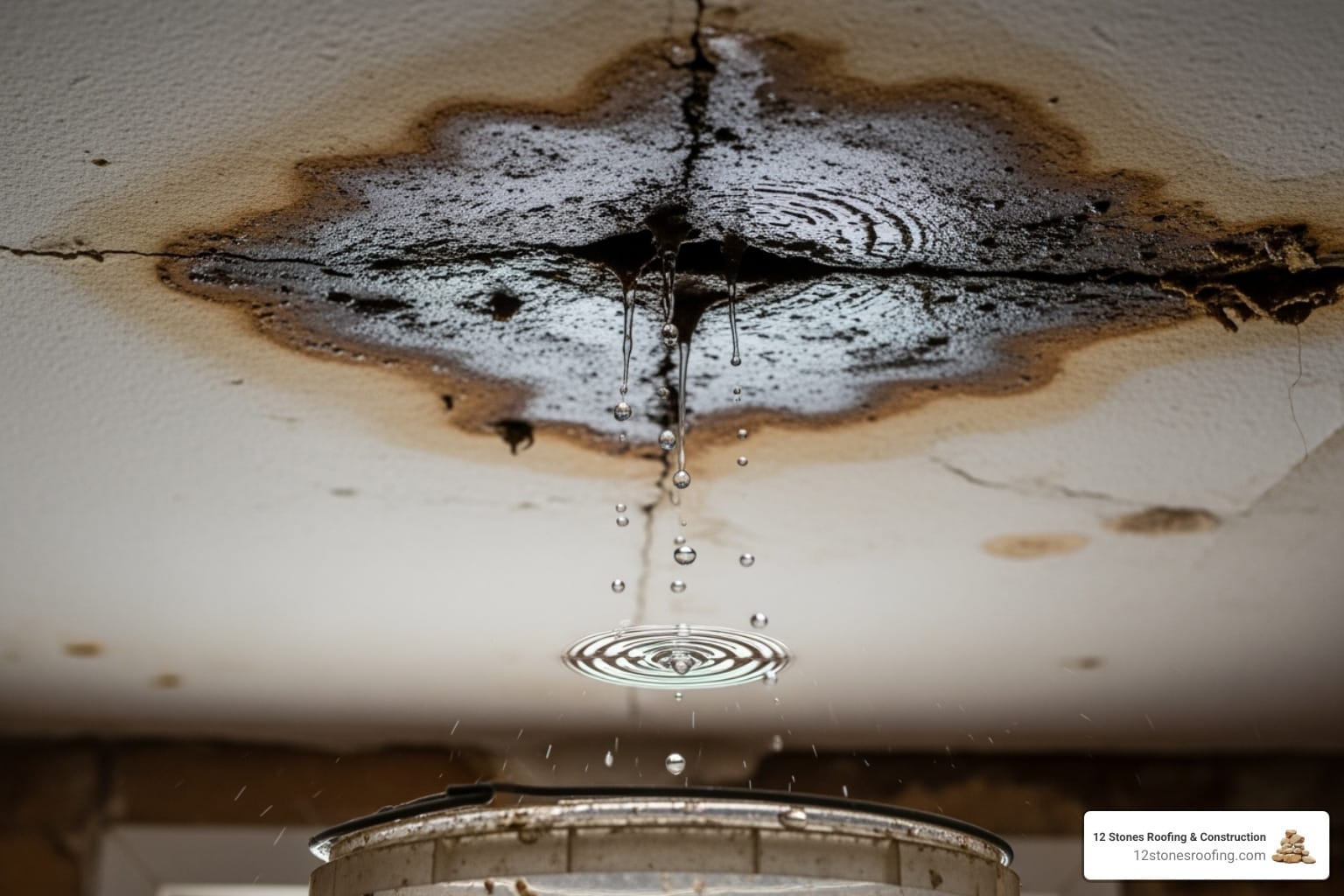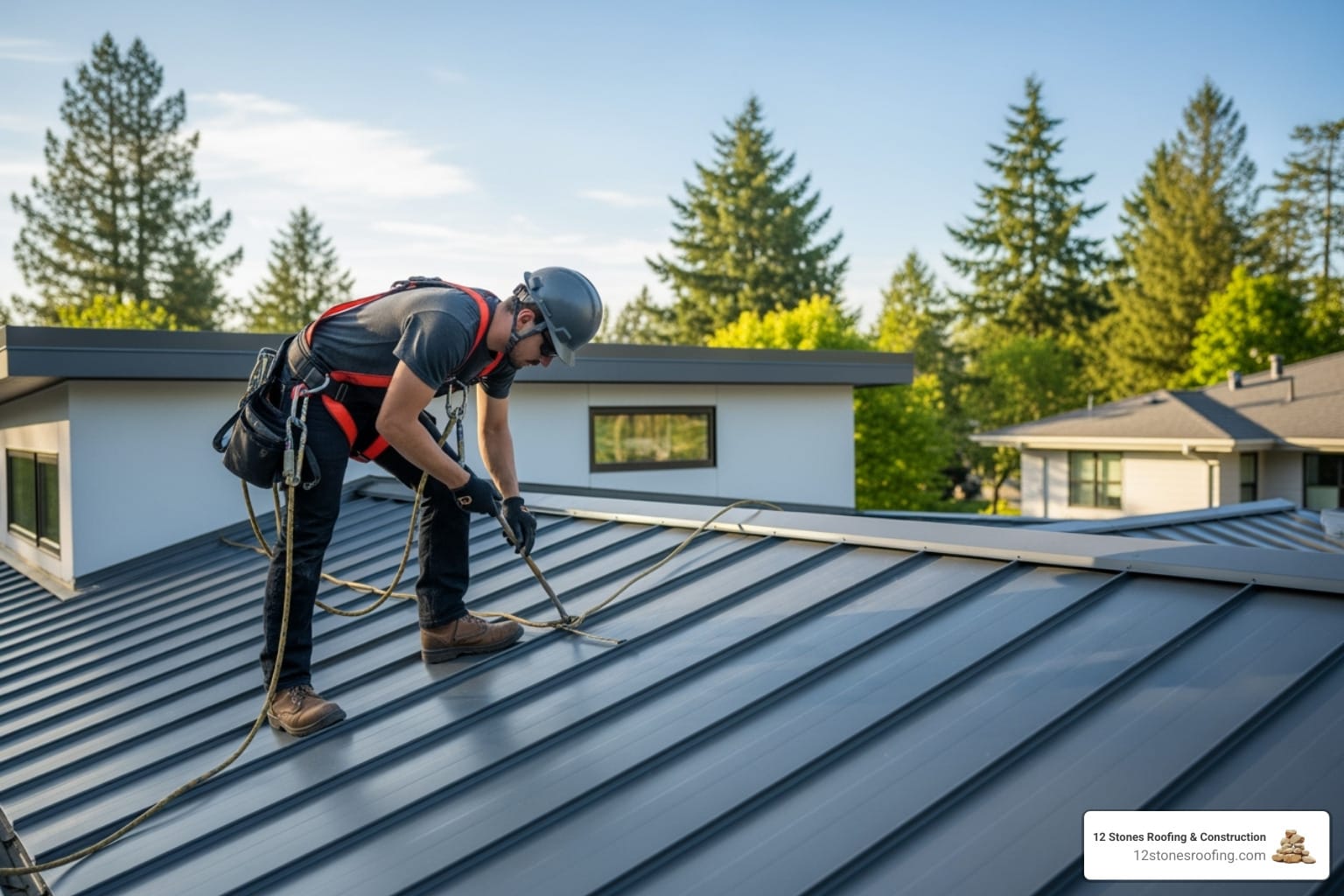Energy-Efficient Roof Replacement in Texas: Cut Cooling Costs 10–25%
An energy efficient roof replacement reduces Texas cooling costs by 10–25%, lowers roof surface temperatures by up to 30°F, and increases resale value—delivering fast, measurable returns. For clear next steps tailored to your home and climate, start with a trusted Texas roofing company. In a climate where air conditioning runs nearly year-round, your roof’s ability to manage heat directly impacts your wallet. Upgrading is a long-term investment in your home’s performance and your family’s comfort. For homeowners in Pasadena and the greater Houston area, a modern roofing system is the first line of defense against relentless summer heat.
What makes a roof energy-efficient? It’s a system of components working together:
- Cool Roof Materials: Surfaces with high solar reflectance (metal, tile, cool asphalt shingles) bounce sunlight away.
- Proper Attic Insulation: A thick layer (R-30 to R-38 is recommended for Texas) resists heat transfer into your living space.
- Adequate Ventilation: A balanced system of soffit and ridge vents allows hot air to escape the attic.
- Reflective Colors: Lighter shades naturally absorb less heat than traditional dark roofs.
An efficient roof can reduce cooling costs by 10-25%, lower roof surface temperatures by up to 30°F, and extend the lifespan of your HVAC system by reducing its workload. These upgrades often qualify for tax credits and utility rebates, adding to their financial appeal.
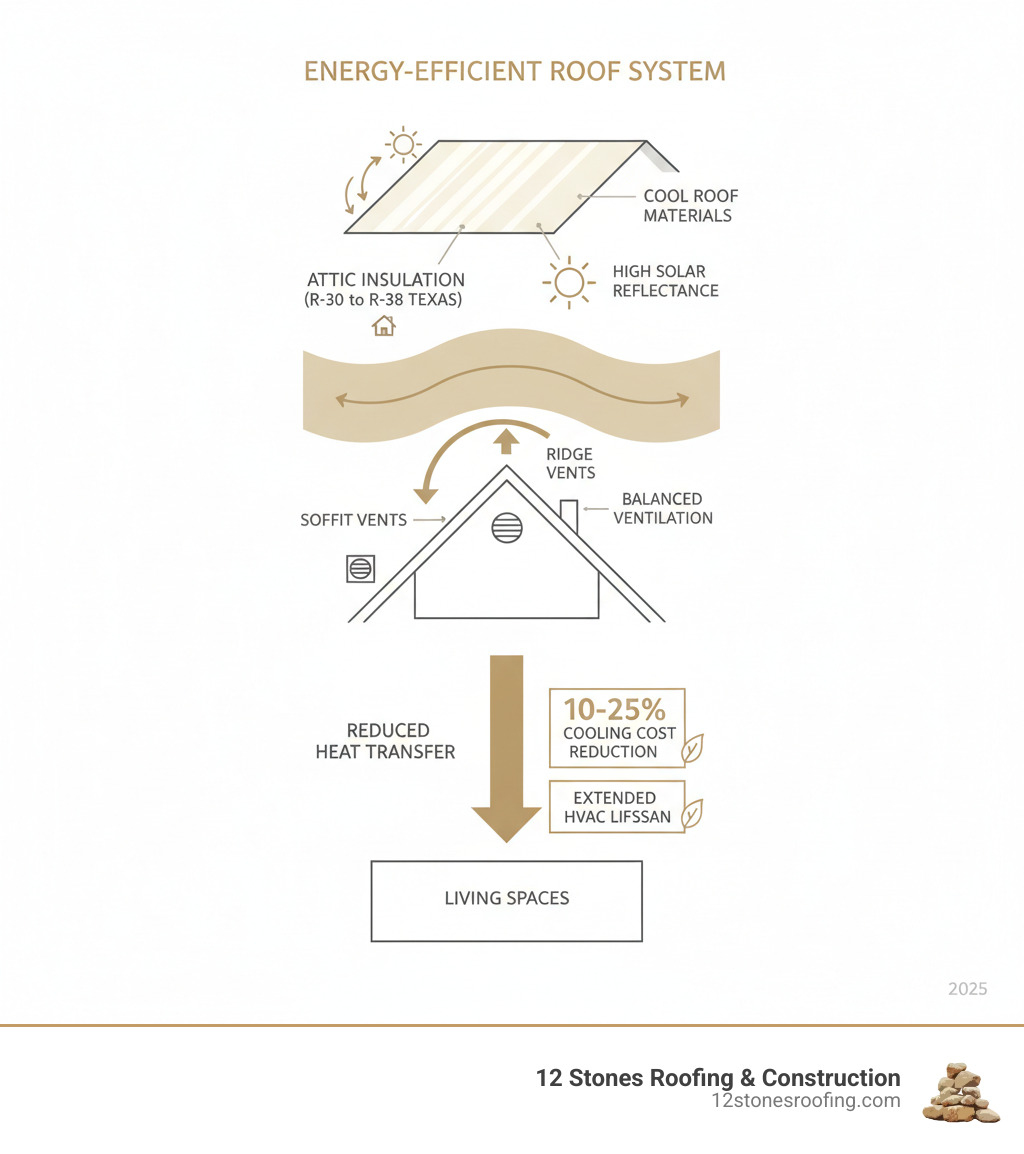
How Your Roof Impacts Energy Bills
Your roof is a major player in your home’s energy consumption. Traditional dark asphalt shingles can reach surface temperatures of 150°F or more, radiating that heat into your attic. This process, known as heat absorption and transfer, turns your attic into an oven and forces your air conditioner to work overtime to keep your home cool.
This constant battle against heat leads to several problems:
- High Energy Bills: As your HVAC system runs longer and harder, your electricity consumption skyrockets.
- Uneven Indoor Temperatures: Rooms on the upper floor often feel significantly hotter, a classic sign of poor roof performance.
- Visible Roof Aging: Cracked, curling, or blistering shingles are a sign that your roof’s protective qualities are failing, reducing its ability to reflect sunlight.
- Overworked HVAC System: An air conditioner that runs constantly is a clear indicator that your roof is letting in too much heat.
Upgrading to an energy-efficient roof turns this liability into an asset, actively working to keep your home cooler and your energy bills lower.
Best Materials for an Energy-Efficient Roof Replacement in Texas
Choosing the right materials is critical for a successful energy efficient roof replacement. In Texas, materials must withstand intense heat, humidity, and severe weather. The best choice balances performance, durability, and cost to deliver long-term value.
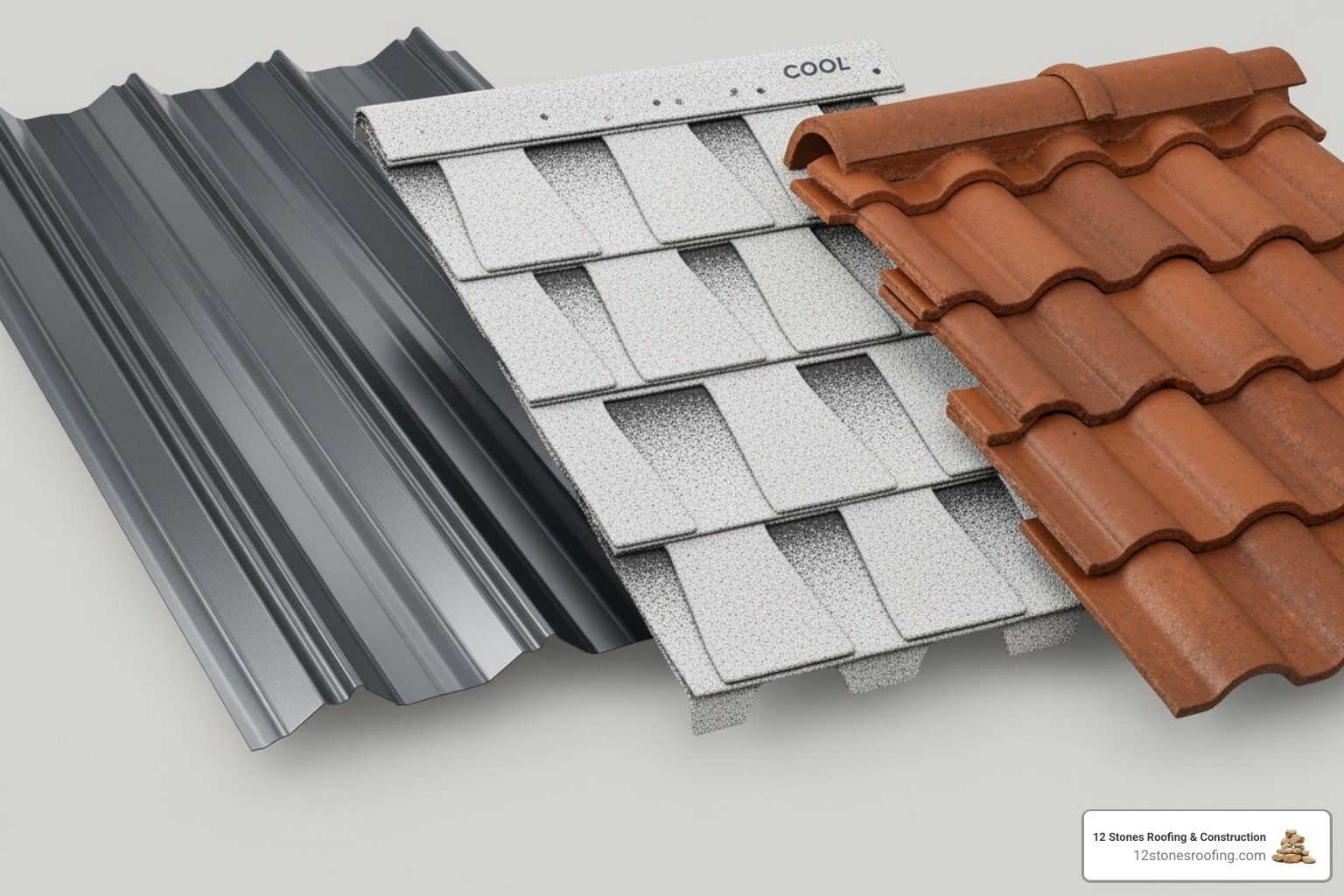
When selecting materials, we focus on key performance metrics:
- Solar Reflectance: This measures how much sunlight a roof reflects. A higher value means less heat is absorbed.
- Thermal Emittance: This indicates how efficiently a roof releases the heat it has absorbed. High emittance helps a roof cool down quickly.
- Durability and Lifespan: Materials like metal and tile can last 40-70 years or more, offering superior long-term value compared to conventional options.
- Upfront Cost vs. Long-Term Savings: While energy-efficient materials may have a higher initial cost, they pay for themselves over time through lower energy bills and reduced maintenance. Verify product reflectance/emittance on the CRRC-rated products directory for apples-to-apples comparisons.
For more insights on material choices specific to our region, see our guide on Energy Efficient Roofing Houston.
Cool Roofs: Reflecting the Sun to Save You Money
Cool roofs are engineered to minimize heat absorption by using highly reflective surfaces. The effectiveness of a cool roof is measured by the Solar Reflectance Index (SRI), which combines both solar reflectance and thermal emittance into a single value. A higher SRI indicates a cooler, more efficient roof.
While light-colored materials naturally reflect more sunlight, modern technology offers more options. Cool-color pigments allow darker-colored roofing materials to reflect a significant amount of invisible, near-infrared sunlight, which is responsible for most heat gain. This allows you to choose a stylish dark roof that still delivers excellent energy performance. According to the U.S. Department of Energy, cool roofs can reduce cooling energy use by up to 15% in single-story buildings.
Comparing the Top Energy-Efficient Roofing Materials
We offer a range of high-performance materials, each with unique benefits for Texas homeowners.
| Material Type | Energy Efficiency (SRI/Reflectivity) | Durability (Lifespan) | Cost (Upfront) | Maintenance |
|---|---|---|---|---|
| Metal Roofing | High reflectivity; SRI values typically 25-82 depending on color and coating | 40-70 years | Higher initial investment | Low; occasional inspections and cleaning |
| Cool Asphalt Shingles | Moderate to high; SRI values 25-50+ with cool-rated options | 20-30 years | Most cost-effective option | Moderate; periodic inspections recommended |
| Clay & Concrete Tile | Excellent thermal performance; natural air gap provides insulation | 50+ years | Higher initial investment | Low to moderate; inspect for cracked tiles |
Metal Roofing is a top performer in both energy efficiency and longevity. With a lifespan of 40-70 years, its high reflectivity can significantly cool your home. The upfront cost is higher, but the long-term energy savings and durability provide a compelling return on investment.
Cool Asphalt Shingles are the most popular residential choice, offering a cost-effective path to energy savings. They use special granules to reflect more sunlight than traditional shingles and come in a wide range of colors, including those with cool-color pigments.
Clay and Concrete Tile offers excellent thermal performance due to its inherent material properties and the natural air gap it creates, which acts as an extra layer of insulation. With a lifespan of 50+ years, tile is a durable and aesthetically pleasing long-term investment.
Beyond Shingles: The Roof System That Delivers Maximum Efficiency
A truly energy efficient roof replacement is more than just the shingles you see. It’s a complete system where insulation, ventilation, and installation quality work together to deliver maximum performance. Neglecting these components means leaving savings and comfort on the table.
Even the most reflective roofing material can’t overcome a poorly insulated and ventilated attic. Trapped, superheated air will still find its way into your living spaces, forcing your air conditioner to work harder. That’s why we approach every project as a complete system optimization, ensuring every layer contributes to peak efficiency.
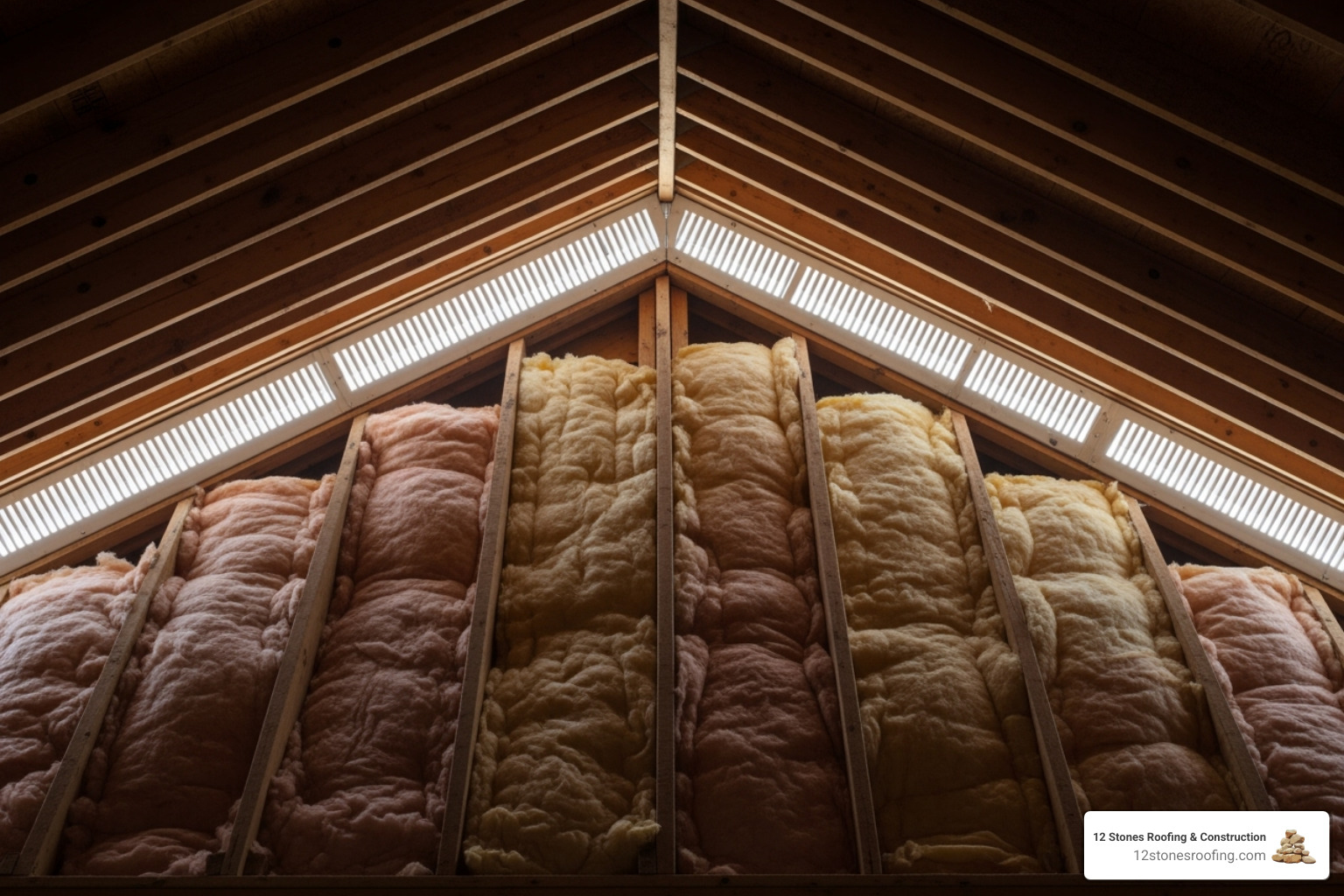
The Critical Role of Attic Insulation and Ventilation
Your attic is the primary battleground against Texas heat, where temperatures can exceed 150°F. Proper insulation and ventilation are your two most important tools in this fight.
Insulation creates a thermal barrier, and its effectiveness is measured by its R-value. For Texas homes, we recommend an R-value of R-30 to R-38 to effectively resist heat flow from the attic to your living spaces. Proper insulation also helps control moisture, preventing mold growth and protecting your home’s structure. According to estimates, insulation upgrades can save up to 17% on energy bills.
Ventilation works in tandem with insulation. A balanced system of soffit vents (to draw in cooler air) and ridge vents (to exhaust hot air) creates continuous airflow. This circulation removes superheated air and moisture from the attic, extending the life of your roofing materials and reducing the load on your HVAC system. As a code-aligned rule of thumb, size total net free vent area at a minimum of 1 square foot per 300 square feet of attic floor area, split roughly 50% intake and 50% exhaust (per International Residential Code guidance).
Integrating Solar Panels with Your New Roof
An energy efficient roof replacement is the perfect time to consider installing solar panels. Coordinating the two projects is both practical and financially savvy.
First, a new roof provides the structural integrity required to support a solar array for its entire 25-30 year lifespan. Installing panels on an old roof means you’ll have to pay to remove and reinstall them when the roof eventually fails.
Second, the solar panels themselves contribute to cooling. They act as a shade layer, blocking direct sunlight from hitting your roof. This can reduce roof surface temperatures and cooling loads by up to 17%, creating a double benefit: you generate your own clean energy while simultaneously improving your home’s thermal performance.
By combining an energy-efficient roof with solar panels, you can maximize your energy independence and achieve the highest possible long-term return on investment.
Savings Calculator: Costs, Rebates, and ROI for Energy-Efficient Roofs
An energy efficient roof replacement is an investment that pays you back over time. While the upfront cost may be higher than for a conventional roof, the long-term savings on energy bills, combined with financial incentives, often result in a surprisingly short payback period.
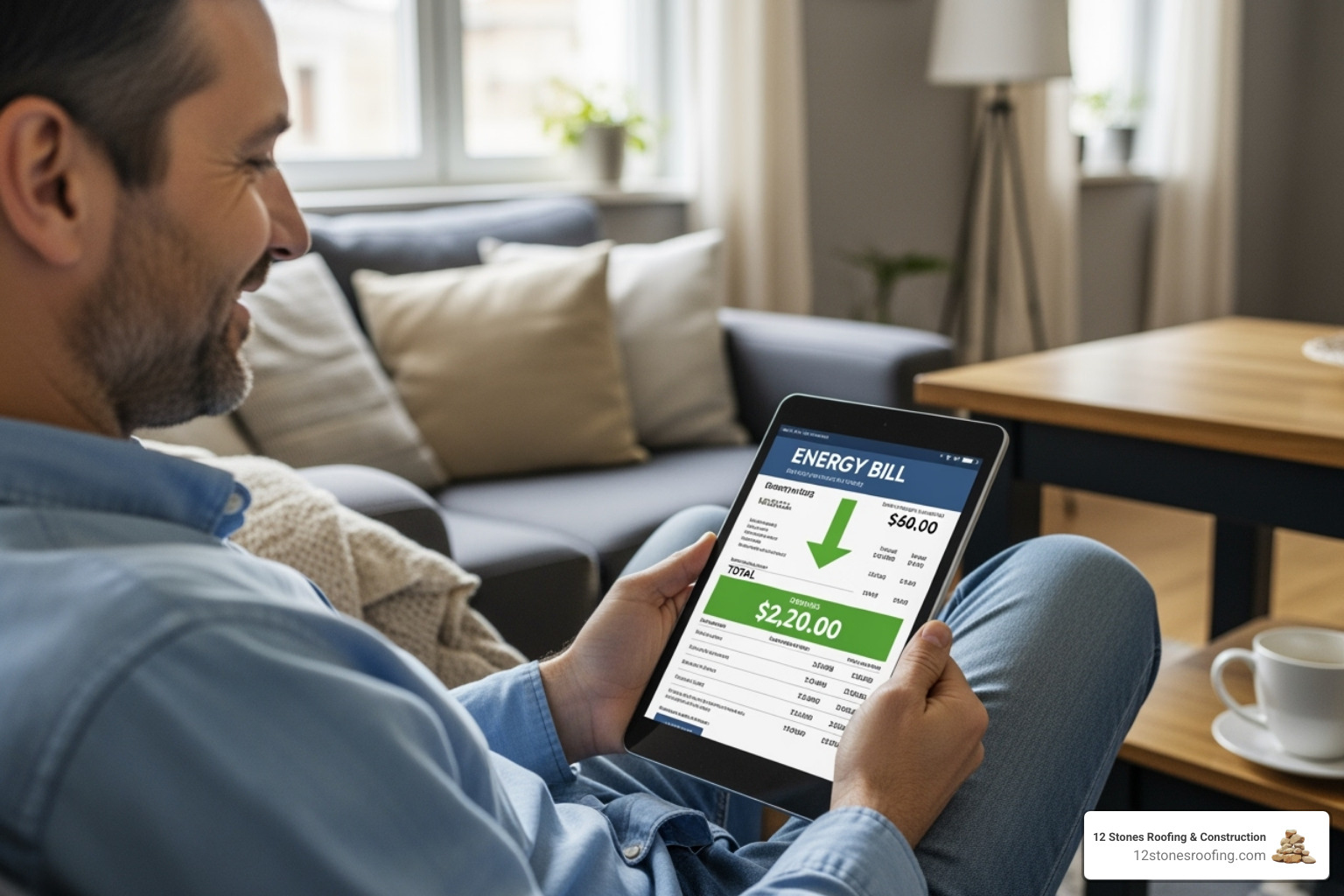
Understanding the full financial picture involves looking beyond the initial price tag to consider reduced utility bills, lower maintenance costs, and increased property value. In the hot Texas climate, these benefits add up quickly, making an efficient roof one of the smartest home improvements you can make.
Calculating Long-Term Savings from an Energy-Efficient Roof Replacement
An energy-efficient roof delivers savings in several key areas:
- Reduced Monthly Utility Bills: This is the most immediate return. A new energy-efficient roof can cut cooling costs by 5-20%. Over the lifespan of a roof, these monthly savings can amount to tens of thousands of dollars. Quick example: If your summer electric spend averages $250/month for six months, a 15% reduction saves $225 per season—$4,500 over 20 years before rate inflation.
- Lower Repair and Maintenance Costs: High-performance materials like metal and tile are built to last, with lifespans of 40-70 years. This durability means you avoid the cost of premature repairs and entire roof replacement cycles.
- Extended HVAC System Life: By reducing the heat load on your home, your air conditioner runs less often and under less strain. This can add years to the life of your HVAC system, helping you avoid a costly replacement.
When you calculate your return on investment (ROI), you’ll find that an energy-efficient roof often pays for itself and delivers a significant net positive return over its lifespan.
Tapping into Rebates and Incentives
Financial incentives can significantly reduce the upfront cost of your new roof. Focus on the programs that apply today:
- Federal Energy Efficient Home Improvement Credit (25C): As of 2025, standalone roofing materials are not eligible under 25C; however, related upgrades like insulation, air sealing, and certain HVAC equipment qualify. See the IRS guidance for current eligibility.
- Residential Clean Energy Credit (25D): Solar PV, solar shingles, and battery storage qualify for a 30% federal tax credit, which pairs well with a new roof when projects are coordinated.
- Local Utility Rebates: Many Texas utility companies offer their own rebate programs to encourage energy conservation. Check with your provider to see what incentives are available for qualifying roofing products.
- DSIRE Database: The Database of State Incentives for Renewables & Efficiency (DSIRE) is a comprehensive, searchable database of federal, state, and local incentives. It’s the best resource for finding all available programs in your area.
Energy-Efficient Roofs: Quick Answers to Top Questions
Homeowners often have questions when considering an energy efficient roof replacement. Here are answers to some of the most common ones.
How do I know if my current roof is energy-inefficient?
A professional energy-focused roof inspection is the best way to know for sure. However, you can look for common warning signs:
- Consistently high summer energy bills.
- Upper floors that are difficult to keep cool.
- Noticeable temperature differences between rooms.
- Visible roof damage like cracked, curling, or blistering shingles.
- An HVAC system that runs constantly.
Does the color of my roof really make a big difference?
Yes, it makes a significant difference. Lighter colors naturally reflect more sunlight and absorb less heat, which keeps your attic and home cooler. However, modern cool roof technology uses special pigments that allow even darker-colored materials to reflect a large portion of the sun’s heat-producing infrared radiation. This gives you the flexibility to choose a color that matches your home’s aesthetic without sacrificing energy performance.
Can I just add a reflective coating to my existing roof?
Applying a reflective coating can be a cost-effective way to improve the efficiency of an existing roof, provided the roof is still in good structural condition. These coatings increase solar reflectance and can extend the life of your current roof.
However, a coating is a temporary solution for an aging or damaged roof. It cannot fix underlying issues like leaks, structural weakness, or failing materials. In these cases, a full roof replacement is the most durable and effective long-term solution. A replacement allows for a comprehensive upgrade of the entire roofing system, including underlayment, ventilation, and insulation, ensuring maximum performance and longevity.
Upgrade Your Roof—and Your Savings—with 12 Stones Roofing
Choosing an energy efficient roof replacement is a strategic investment in your home’s comfort, value, and sustainability. By selecting the right materials and ensuring proper insulation and ventilation, you can dramatically reduce your energy consumption and enjoy a more comfortable living environment for decades.
The benefits are clear and measurable. You’ll see the difference in your monthly utility bills, feel the improved comfort of consistent indoor temperatures, and increase your property’s value. It’s a home improvement that pays for itself through lower operating costs while also reducing your environmental footprint.
At 12 Stones Roofing & Construction, we specialize in designing and installing complete energy-efficient roofing systems custom to the demands of the Texas climate. We understand which materials and techniques deliver the best performance and long-term value for Pasadena homeowners.
Ready to explore your options? Our team is here to provide a thorough assessment of your current roof and explain how an energy-efficient upgrade can benefit you. Visit our website to schedule your free, no-pressure evaluation with the leading roofers in Pasadena, TX. Let’s work together to upgrade your home’s comfort and efficiency.



